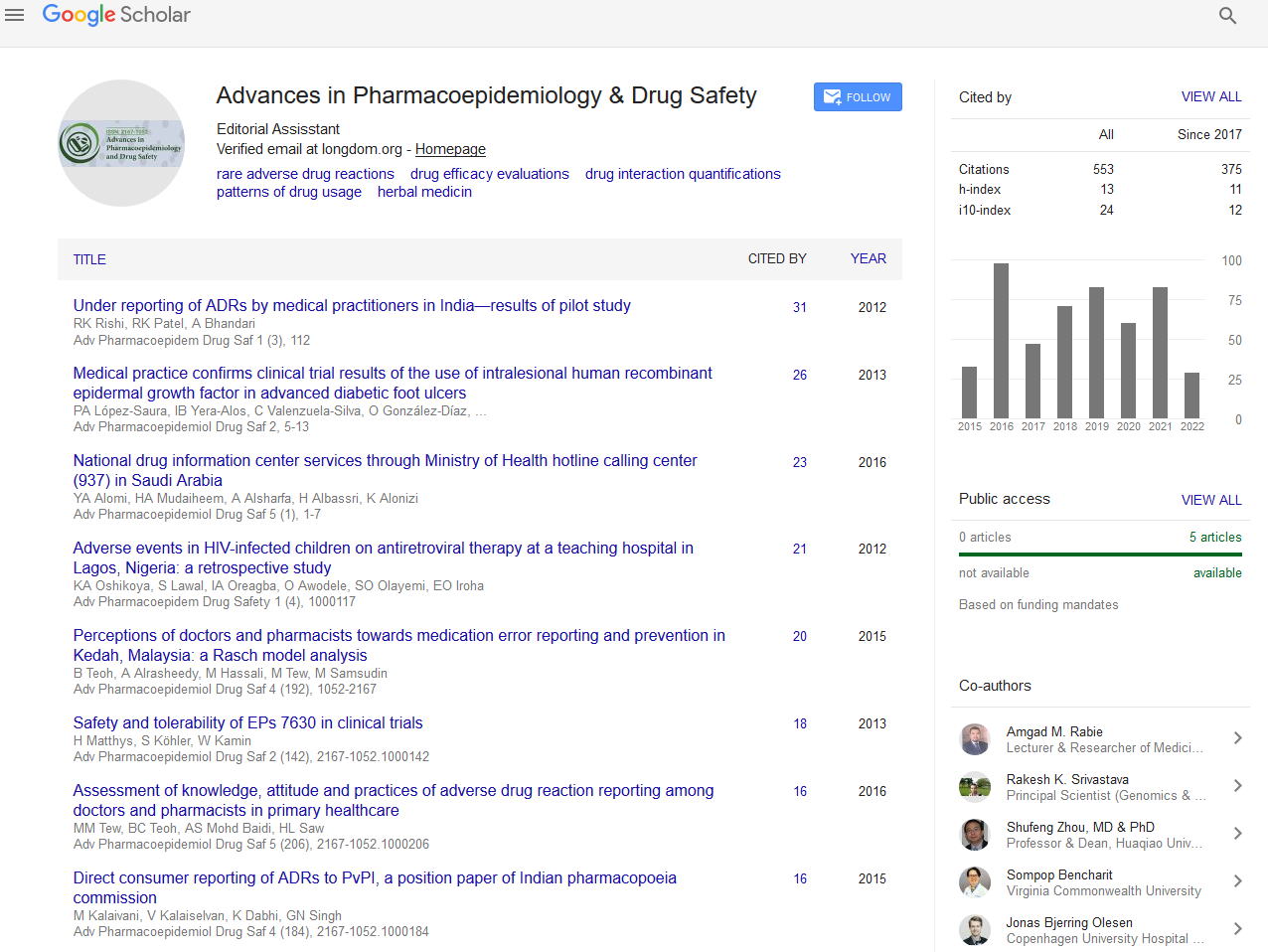Indexed In
- Open J Gate
- Genamics JournalSeek
- Academic Keys
- JournalTOCs
- RefSeek
- Hamdard University
- EBSCO A-Z
- SWB online catalog
- Publons
- Geneva Foundation for Medical Education and Research
- Euro Pub
- Google Scholar
Useful Links
Share This Page
Journal Flyer

Open Access Journals
- Agri and Aquaculture
- Biochemistry
- Bioinformatics & Systems Biology
- Business & Management
- Chemistry
- Clinical Sciences
- Engineering
- Food & Nutrition
- General Science
- Genetics & Molecular Biology
- Immunology & Microbiology
- Medical Sciences
- Neuroscience & Psychology
- Nursing & Health Care
- Pharmaceutical Sciences
Abstract
Beneficial Pharmacokinetic Drug Interactions
Pharmacokinetic drug interactions are common, particularly in elderly patients taking multiple medications, and are generally unexpected with negative consequences for the patient. However, there are a number of reasons why clinicians may wish to strategically employ a combination of drugs to optimize response to treatment. Inhibitors of cytochrome P450-mediated drug metabolism in the liver and intestinal wall can improve oral bioavailability, reduce clearance and prolong half-life of co-administered therapeutic agents such as immunosuppressant’s and protease inhibitors. Potential benefits include reduced daily dose and cost of therapy, less variability in plasma concentrations and longer dosing intervals for patient convenience and compliance. Inducers of metabolism such as phenytoin or St. John’s wort may be of value when given with drugs whose effects are primarily mediated by active metabolites. Finally, inhibitors of the activity of drug transport proteins such as p-glycoprotein can have a similar effect as inhibitors of drug metabolism on the pharmacokinetic properties of co-administered drugs. In addition, uptake of drug into cancer cells or tissues such as the central nervous system may be disproportionately increased resulting in more effective treatment. This paper provides an overview of the theoretical rationale for beneficial drug interactions with specific examples of interactions that are currently being used clinically or actively undergoing research.


